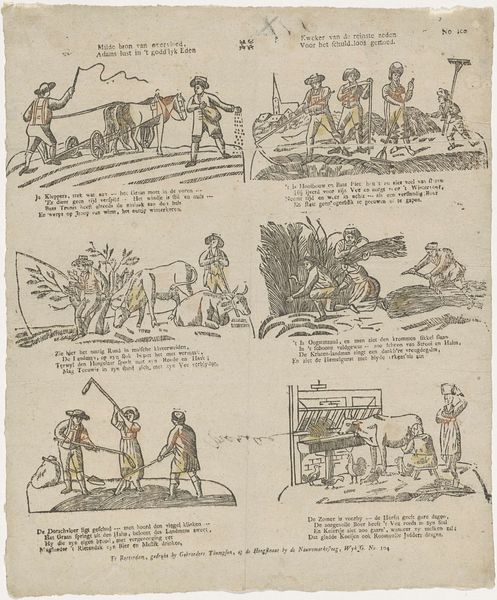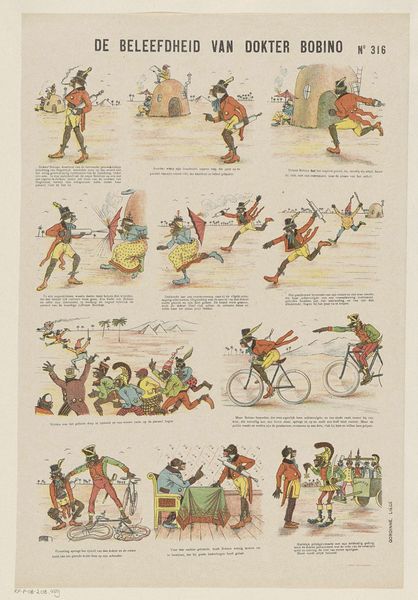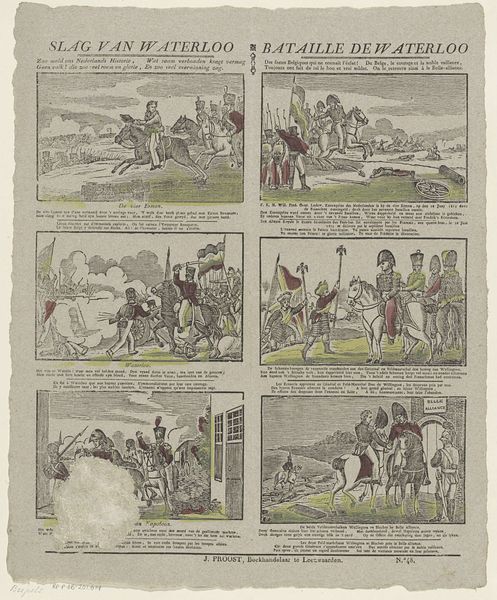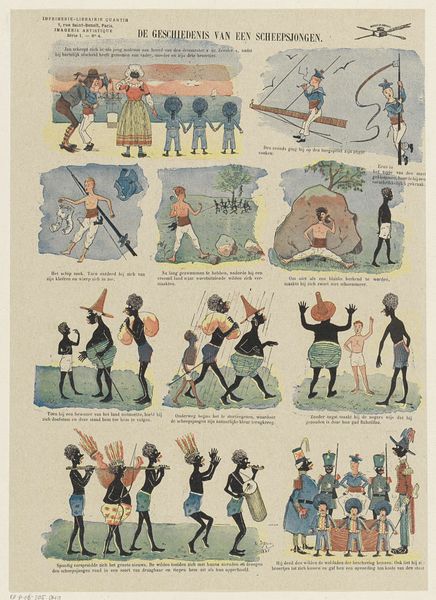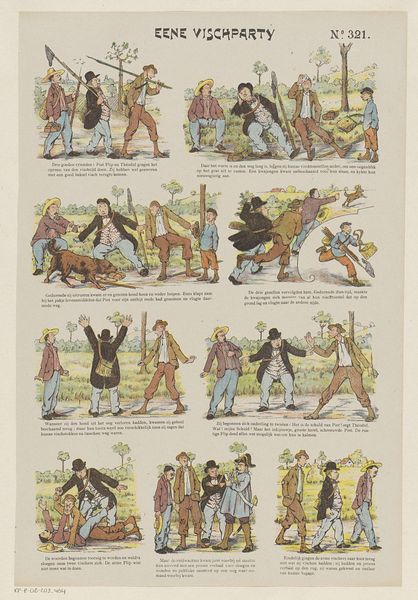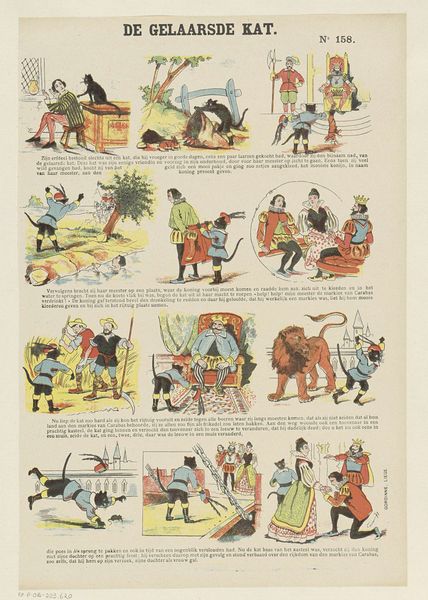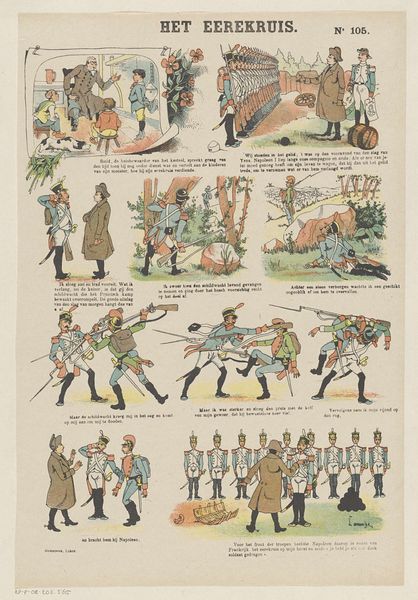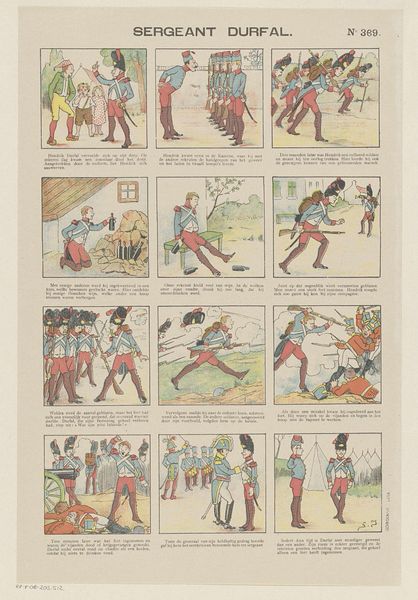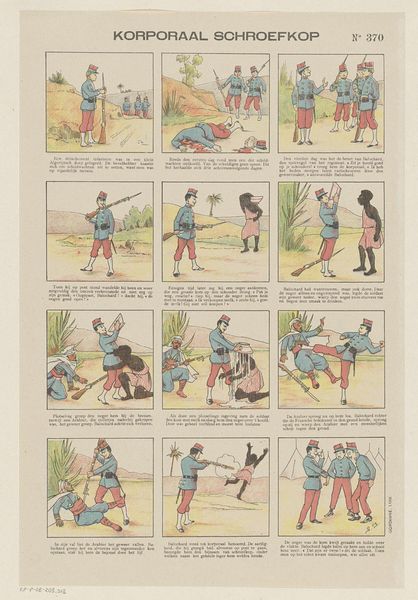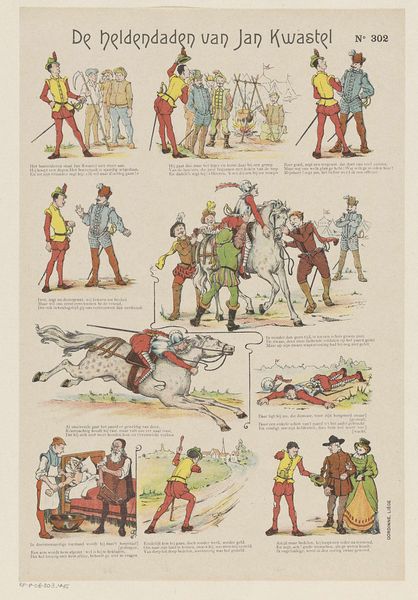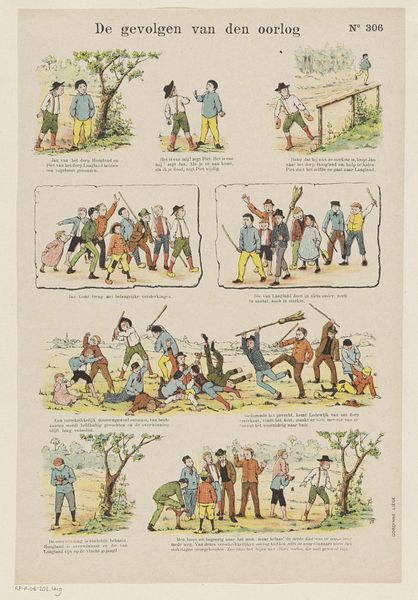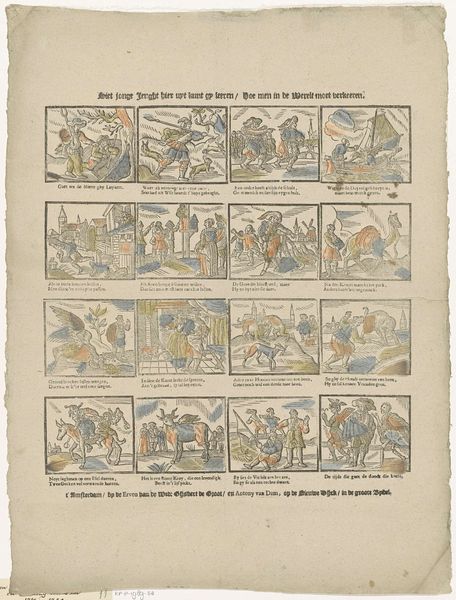
lithograph, print
#
african-art
#
narrative-art
#
lithograph
# print
#
orientalism
#
genre-painting
Dimensions: height 399 mm, width 271 mm
Copyright: Rijks Museum: Open Domain
Curator: This lithograph, produced between 1894 and 1959, is titled "Savorgan de Brazza, de ontdekkingsreiziger in de Congo" which translates to "Savorgan de Brazza, the explorer in the Congo." Editor: It feels…didactic. These scenes laid out in a grid, depicting encounters and exchanges, evoke a sense of order and imposed narrative on what must have been a far more complex and messy reality. There is a cold distance, no human touch. Curator: As a print, it belongs to a lineage of mass-produced imagery, part of the machinery of colonial representation. It tells of the explorer Savorgnan de Brazza and events unfolding in the Congo. Each panel would have been reproduced using the same stone and printing process to make identical depictions available to wider audiences. What that entailed in terms of labor is fascinating. Editor: What jumps out at me are the consistent motifs: the presentation of gifts, the raising of flags, the act of parleying or treaty-making. Each carries potent symbolic weight. Think about what gifts *meant* in this period; for both cultures represented, objects could signify respect or be imbued with cultural status, though the interpretation would differ. Curator: I am drawn to the way labor is shown; Africans performing tasks from rowing to building, always present and integral. What were the source images used, the references brought to bare in assembling this depiction of events? What materials besides ink and paper went into it and where were those sourced? How were the work's subjects—Indigenous Congolese people—themselves consumers, users, and appropriators of lithographic art at the time? Editor: The imagery almost neutralizes agency, reducing the explorer, the Congolese king, and everyone involved into types rather than individuals, enacting what we recognize now as cultural amnesia, forgetting individual subjectivities to convey the so-called narrative of civilization's progress. The flag becomes just the flag; it loses its meaning by simply becoming an illustration of itself. Curator: The social and economic dimensions of producing and disseminating these kinds of images matter. Knowing that this kind of print became widespread also means considering its role as part of broader material exchanges between Europe and Africa at this period, its function in the maintenance and propagation of colonial power structures. Editor: Looking at it from my angle, the images work less as reportage and more as cultural artifacts; symbols from our past echoing back to illuminate elements of current political rhetoric that serve power. Thank you for expanding its material reality!
Comments
No comments
Be the first to comment and join the conversation on the ultimate creative platform.
